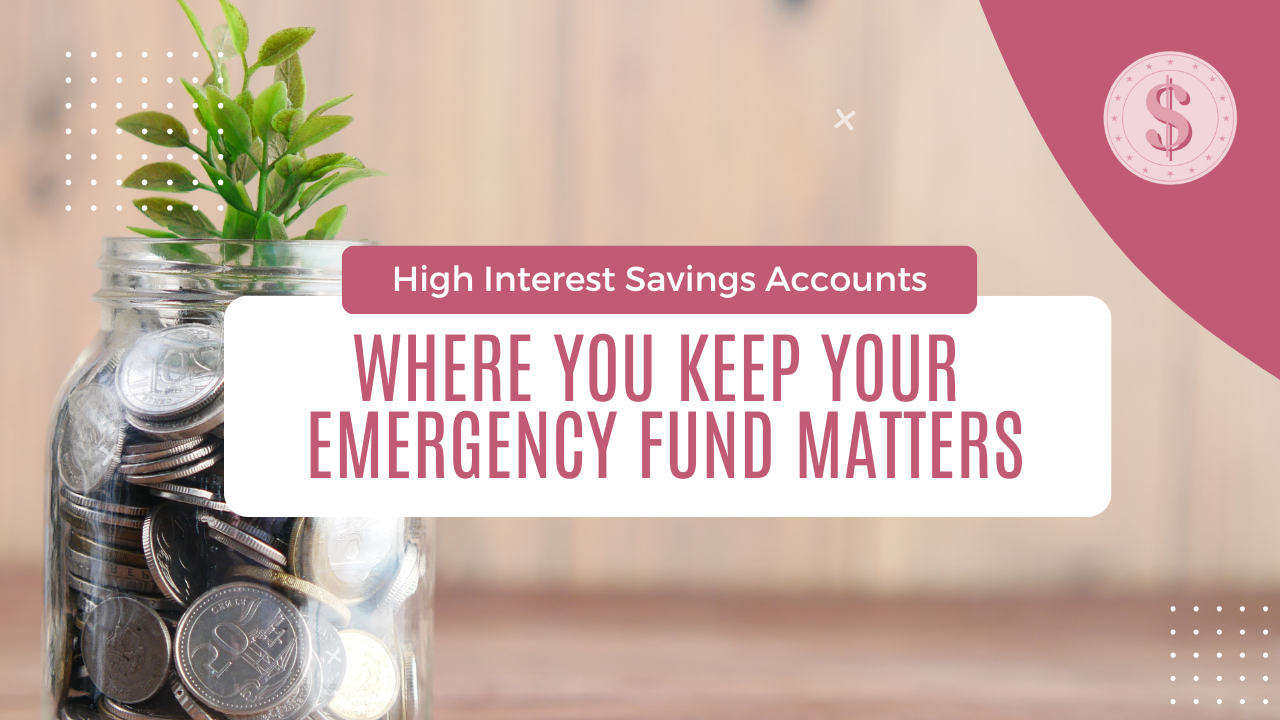Where You Keep Your Emergency Fund Matters (Here's What I Do)
Since my divorce and return to Aotearoa, nothing has given me more peace of mind than having an emergency fund. It reminds me - daily - that I’ve got my own back. That I can handle life’s curveballs. That I’m not dependent on anyone else to keep me safe.
But here’s the thing: having that big pile of cash sitting there? It’s tempting. It feels powerful. It is powerful. And that means you have to treat it with respect.
The best way to do that? Keep it in a high-interest savings account (HISA).
🧠 Why I swear by a high-interest savings account
A HISA isn’t just a place to park your money, it’s a tool for protecting your future. Here’s why I chose one for my emergency fund (and why you might want to do the same):
✅ It grows faster
Many HISAs are offering 4–5% interest right now. That’s free money. While it won’t make you rich, it helps your fund keep up with inflation, and adds a little cushion over time.
✅ It’s safe and secure
These accounts are usually government-insured, which means your money is protected (up to a certain limit) even if the bank fails.
✅ You can access it in an emergency - but not too easily
Which brings me to my pro tip...
✨ My “access but not too easy” method
I don’t keep my emergency fund in an account I can instantly transfer from. Sounds inconvenient? Good. That’s kind of the point.
Here’s how I’ve set mine up:
My emergency fund lives in a high-interest savings account at a different bank to my everyday accounts.
To access the money, I have to transfer it into a separate account at a different bank. That account has no bank card attached.
From there, I have to transfer it again to an account I can access with a card.
It adds a ~24-hour delay between deciding to dip into the fund and actually being able to spend the money. And honestly? That’s the reason I haven’t touched it for anything other than true emergencies.
I have other money set aside in sinking funds and a small buffer for day-to-day stuff. But my emergency fund? That’s sacred. That’s my “get out of crisis free” money.
This system might sound like a faff, but it works for me. It gives me structure, discipline, and a sense of control. You do you, boo - but if you’re prone to dipping into your savings for non-essentials, adding a little friction might help you succeed too.
💬 Final thoughts
Your emergency fund is there for you when everything else falls apart. Keeping it in a high-interest savings account isn’t just financially smart, it’s an act of self-respect.
If you’re just starting to build one, start small. $5 a week. $20 a month. Whatever you can do. Over time, it adds up. And when life happens (because it always does), you’ll be so glad you did.
And if you want to build yours alongside a supportive group of women, come join our Emergency Fund Challenge. We’ve got your back, just like you’re learning to have yours.

